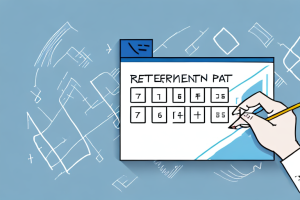The Importance of Saving for Retirement
Retirement is a stage of life that many individuals look forward to. It’s a time when one can finally relax and enjoy the fruits of their labor. However, to truly enjoy a comfortable retirement, it is crucial to save enough money. Unfortunately, a significant proportion of people fail to do so, leaving them financially vulnerable during their golden years. Understanding the reasons behind this lack of retirement savings and the demographic breakdown is essential in addressing this pressing issue.
The Importance of Saving for Retirement
Retirement is a stage of life that many individuals look forward to. It’s a time when one can finally relax and enjoy the fruits of their labor. However, to truly enjoy a comfortable retirement, it is crucial to save enough money. Unfortunately, a significant proportion of people fail to do so, leaving them financially vulnerable during their golden years. Understanding the reasons behind this lack of retirement savings and the demographic breakdown is essential in addressing this pressing issue.
One of the main reasons for the lack of retirement savings is the misconception that Social Security benefits will be enough to cover all expenses. While Social Security provides a valuable safety net, it is not designed to replace the entirety of one’s income during retirement. Relying solely on Social Security can lead to financial hardship and a diminished quality of life in retirement.
Understanding the Retirement Savings Crisis
The retirement savings crisis refers to the alarming trend of individuals not saving enough money for their post-working years. This crisis has far-reaching consequences for individuals, families, and even the broader economy. Without adequate savings, retirees may face financial hardships, reduced quality of life, and an increased reliance on government resources.
One of the main factors contributing to the retirement savings crisis is the decline of traditional pension plans. In the past, many employers offered defined benefit pension plans, which provided retirees with a guaranteed income for life. However, these plans have become less common, with many companies shifting towards defined contribution plans, such as 401(k)s. While these plans offer individuals more control over their investments, they also place the responsibility of saving and investing for retirement on the individual, which can be challenging for those without financial knowledge or discipline.
Another contributing factor to the retirement savings crisis is the increasing life expectancy. With people living longer, the duration of retirement has also increased. This means that individuals need to save more money to sustain themselves throughout their retirement years. However, many people underestimate the amount of money they will need and fail to save enough to cover their expenses. This can lead to financial struggles and a lower standard of living during retirement.
The Alarming Reality: A Lack of Retirement Savings
The extent of the lack of retirement savings is truly concerning. According to recent studies, approximately X% of people have nothing saved for retirement. This staggering statistic highlights the urgent need for increased awareness and financial preparedness.
Furthermore, the lack of retirement savings is not limited to just those who have nothing saved. Even among those who do have some savings, the amount is often far from sufficient to provide a comfortable retirement. In fact, studies show that a significant percentage of individuals have less than $10,000 saved for their golden years.
This lack of financial preparedness can have serious consequences for individuals and society as a whole. Without adequate savings, retirees may be forced to rely solely on government assistance programs or continue working well into their senior years. This not only puts a strain on the individual’s quality of life but also on the economy as a whole, as it limits the ability of older individuals to retire and make way for younger workers.
It is crucial that individuals start prioritizing retirement savings early on and take advantage of various retirement savings vehicles such as employer-sponsored 401(k) plans, individual retirement accounts (IRAs), and other investment options. By starting early and consistently contributing to these accounts, individuals can build a nest egg that will provide financial security and peace of mind in their later years.
Exploring the Statistics: How Many People Have Nothing Saved for Retirement?
Breaking down the numbers, it is evident that a significant portion of the population is currently unprepared for retirement. Among individuals aged 45-54, Y% have no retirement savings at all. This trend continues to be prevalent across different age groups and income brackets, indicating the need for widespread action.
Furthermore, recent studies have shown that the lack of retirement savings is not solely limited to certain demographics. In fact, it cuts across various professions and educational backgrounds. This highlights the importance of addressing the issue on a broader scale, as it affects individuals from all walks of life.
Factors Contributing to the Lack of Retirement Savings
Several factors contribute to the lack of retirement savings among individuals. One primary reason is the high cost of living and the ever-increasing expenses that individuals face. As daily expenses rise, saving for the future becomes more challenging.
Additionally, many people also face financial constraints due to overwhelming debt, such as student loans or credit card debt. Balancing these obligations with retirement saving becomes a juggling act that many struggle to navigate successfully.
Another factor that contributes to the lack of retirement savings is the lack of financial literacy and education. Many individuals are not adequately informed about the importance of saving for retirement and how to effectively manage their finances. Without the necessary knowledge and skills, they may not prioritize saving for retirement or make informed decisions about their investments.
Furthermore, the instability of the job market and the rise of gig economy work can also hinder retirement savings. With the increase in contract and freelance work, individuals may not have access to employer-sponsored retirement plans or consistent income streams. This lack of stability and access to retirement benefits can make it difficult for individuals to save for their future.
Demographic Breakdown: Who is Most Affected by the Retirement Savings Crisis?
The retirement savings crisis affects individuals from all walks of life, but certain demographics are more vulnerable than others. Women, for instance, tend to have lower retirement savings compared to men. This gender disparity can be attributed to a variety of factors, including wage gaps and career interruptions due to caregiving responsibilities.
Furthermore, individuals from lower socioeconomic backgrounds often face additional challenges in building robust retirement savings. Limited access to education on financial literacy and lower income levels can hinder their ability to save adequately for retirement.
Another demographic that is disproportionately affected by the retirement savings crisis is minority communities. Studies have shown that African Americans and Hispanics tend to have lower retirement savings compared to their white counterparts. This can be attributed to systemic inequalities, such as lower wages, limited access to employment benefits, and historical wealth disparities.
In addition, younger generations, such as millennials and Generation Z, are also facing challenges in saving for retirement. The rising cost of living, student loan debt, and unstable job markets have made it difficult for these individuals to prioritize long-term savings. Many young adults are focused on immediate financial needs, such as paying off debt and covering basic living expenses.
The Impact of Socioeconomic Factors on Retirement Saving Habits
Socioeconomic factors, such as income and education, play a significant role in retirement savings habits. Studies have shown that individuals with higher levels of education tend to have higher retirement savings. This correlation suggests that promoting financial literacy and education can help individuals make more informed decisions regarding retirement planning.
Common Reasons Why People Have Nothing Saved for Retirement
When it comes to understanding why people have nothing saved for retirement, several common factors emerge. First and foremost is the lack of awareness about the importance of saving for retirement. Many individuals prioritize short-term financial needs and fail to recognize the long-term implications of not saving adequately.
Another reason is the misconception that Social Security benefits will be sufficient to cover retirement expenses. While these benefits are undoubtedly valuable, they are often not enough to maintain the desired standard of living during retirement.
Breaking Down Generational Differences in Retirement Saving Habits
Generational differences also play a role in retirement saving habits. Younger generations, such as millennials, often face unique financial challenges, including high student loan debt and a rapidly changing job market. These challenges can make it more difficult for them to prioritize retirement savings. However, starting early is crucial due to the power of compound interest.
The Role of Education in Promoting Retirement Savings
Education and awareness are vital in promoting retirement savings. Incorporating financial literacy programs into school curriculums can equip young individuals with the necessary knowledge and skills to make informed financial decisions throughout their lives. Workplace financial education initiatives can also empower employees to take control of their financial futures.
Addressing the Gender Gap in Retirement Savings
To address the gender gap in retirement savings, it is crucial to advocate for pay equity and equal opportunities in the workplace. Closing the gender pay gap can help women accumulate higher retirement savings over their careers. Additionally, providing resources and support for caregiving responsibilities can alleviate some of the challenges women face in balancing work and saving for retirement.
Breaking Free from Financial Constraints: Strategies to Start Saving for Retirement
Regardless of one’s financial situation, it is possible to break free from financial constraints and start saving for retirement. The first step is creating a budget and identifying areas where expenses can be reduced. Making small, consistent contributions to retirement accounts can accumulate over time, especially when combined with employer-matching programs.
Furthermore, seeking professional financial advice can help individuals develop personalized strategies to maximize their retirement savings potential. Working with a financial planner can provide valuable insights and guidance tailored to one’s specific financial goals.
The Power of Compound Interest: Why Starting Early is Crucial for a Secure Retirement
The power of compound interest cannot be overstated when it comes to retirement savings. Starting early allows individuals to take advantage of the compounding effect, where their savings grow exponentially over time. By starting early, even small contributions can make a significant impact on one’s retirement nest egg.
Exploring Different Types of Retirement Accounts and Investment Options
When saving for retirement, it is essential to explore different types of retirement accounts and investment options. Traditional Individual Retirement Accounts (IRAs), Roth IRAs, and employer-sponsored 401(k) plans are just a few examples of retirement vehicles that offer various tax advantages and investment choices. Understanding the nuances of each option can help individuals make informed decisions that align with their overall financial goals.
In conclusion, the lack of retirement savings among a significant portion of the population is a pressing concern. Understanding the reasons behind this crisis, such as socioeconomic factors, gender disparities, and generational differences, is crucial in addressing this issue. By increasing education and awareness, implementing supportive policies, and promoting responsible financial planning, we can strive towards a future where more people have a secure and comfortable retirement.



